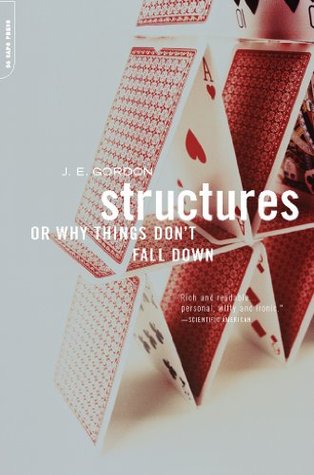More on this book
Community
Kindle Notes & Highlights
When we were very young, most of us played with ‘bricks’, and about the first thing we did was to build a tower by piling one brick upon another rather erratically. Usually, when the tower had reached a modest height, it fell down. Even the child knew perfectly well, although he could not have expressed the idea in scientific words, that there was no question of the bricks being crushed under a compressive stress. The actual stress in the bricks was negligible; what happened was that the pile of bricks tipped up and fell over because the tower was not straight and vertical. In other words the
...more
the friction in the joints is so high that failure will not happen because of bricks or stones sliding over each other. In fact no sliding movements at all will take place before the structure collapses.
the function of the mortar is not to ‘glue’ the bricks or stones together but simply to transmit the compressive load more evenly.
Contrary to what one might suppose, weight at the top is likely to make a wall more, and not less, stable and will bring an erring thrust line back, more or less,
There are really several thrust lines, and all of them need to be kept inside the surface of the wall. The passive thrust line. This is the thrust line which results from the weight of the wall itself and of all the things which are permanently attached to it, such as floors and roofs. The active thrust lines. These are the thrust lines which result, not only from the permanent parts of the building, but also from all the transient loads which might be applied to it by wind pressure or the weight of things like water, coal, snow, machinery, vehicles, people and so on. The shapes of the various
...more
If we are tempted to indulge in the fashionable activity of turning a modern attic into an extra bedroom, the most serious problem is likely to be the stiffness of the floor. Although the roof-truss is unlikely to break, the deflections caused by the extra weight of people and furniture may well cause serious and expensive damage to the house.
The truth seems to be that we are frightened to express ourselves in ornament. We don’t know how to handle it, and fear that we may expose the nakedness of our mean little souls. Medieval masons did not have that kind of inhibition, and they were probably psychologically healthier in consequence.


